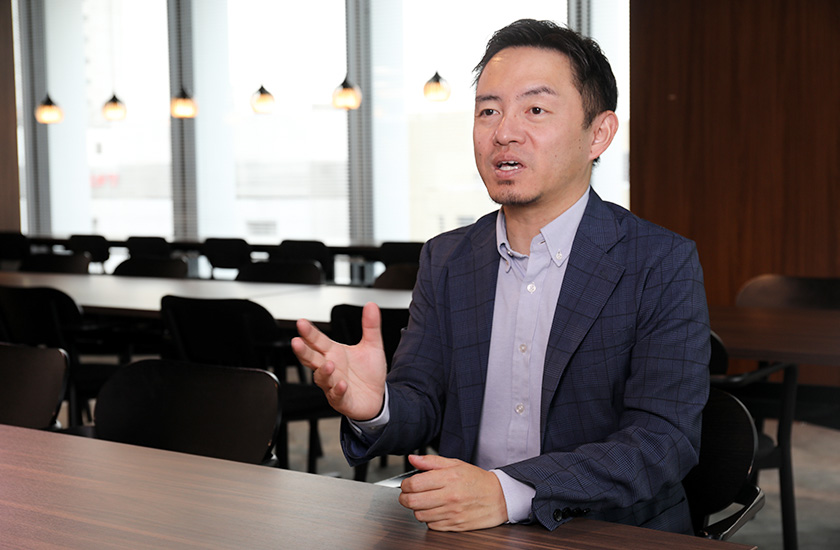- Fujitsu Manufacturing Solutions
- Offerings
- Production Preparation Sophistication Offering
- Upgradation of cost and production Offering
- Solutions
- Fujitsu Application for SAP® Solutions
- Production Planning
Fujitsu Application for SAP® Solutions Detail Scheduling Template - Build-to-order manufacturing
Fujitsu Application for SAP® Solutions Mass Customization Template - Actual Cost
Fujitsu Application for SAP® Solutions Actual Costs Template - SAP S/4HANA® Manufacturing for Production Engineering and Operations (SAP PEO)
- SAP® Digital Manufacturing (SAP DM)
- SAP® Integrated Business Planning (SAP IBP)
- SAP® Portfolio and Project Management (SAP PPM)
- Case study
- SAP S/4HANA® Manufacturing for Production Engineering and Operations (SAP PEO)
- Kawasaki Heavy Industries, Ltd.
- Kawasaki Heavy Industries, Ltd. (Fujitsu Uvance)
- Kawasaki Heavy Industries, Ltd. (SAP Website)

- SAP® Digital Manufacturing (SAP DM)
- Anaplan
- Fujitsu Supply Chain Planning Solutions
(Old name: FUJITSU Enterprise Application GLOVIA smart PROFOURS
FUJITSU Manufacturing Industry Solution COLMINA scheduler / PSI)
- FUJITSU DIE-TECH CORPORATION OF THE PHILIPPINES Innovative Case Study Report on Production Planning Operations in the Global Supply Chain GLOVIA smart PROFOURS (PDF)

- Successful application of "PROFOURS" in FUJITSU DIE-TECH CORPORATION OF THE PHILIPPINES (YouTube)
- Tohshin Seiki Co.,Ltd. (PDF)

- RISU PACK CO., LTD. (PDF)

- GOLD PAK CO., LTD. (PDF)

- Fujitsu Limited (PDF)

- Fujitsu Supply Chain Planning Solutions
- Fujitsu ERP Solutions for Process
(Old name: FUJITSU Enterprise Application GLOVIA ProcessC1)
- TOAGOSEI CO., LTD. (PDF)

- ASAHI BREWERIES, LTD. (PDF)

- NIHON NOHYAKU CO.,LTD. (PDF)

- Nippon Light Metal Company, Ltd. (PDF)

- ADEKA Corporation (PDF)

- Showa Denko K.K. (PDF)

- Fujitsu Digital Manufacturing FJVPS
- Fujitsu ERP Solutions for Process
- Catalog
- List of introductory materials on Planning Sophistication Offering
- Supply Chain Planning Solutions for Profit Maximizing S & OP Processes
SAP® Integrated Business Planning (SAP IBP) - Integrated Production Planning Solution for Supply Chain DX
GLOVIA smart PROFOURS
- List of introductory materials on Manufacturing execution management sophistication Offering
- List of introductory materials on Upgradation of cost and production Offering
- List of introductory materials on Upgradation of cost Offering
- For SAP deployment users
Cost / Profit and loss management solutions
Fujitsu Application for SAP® Solutions Actual Costs Template
- List of introductory materials on Upgradation of production Offering
- Fujitsu best add-in solution for flexible use of SAP
Fujitsu Application for SAP® Solutions Mass Customization Template - An ERP solution for Assembly Manufacturers Realize Mass Customization through Product Configuration Management
Fujitsu Application for SAP® Solutions Mass Customization Template (SIEMENS) - Provided by Fujitsu SAP Engineering Manufacturing Execution Solution
SAP S/4HANA® Manufacturing for Production Engineering and Operations (SAP PEO) - Solutions to manage all multiple parallel planning, development, and investment projects
SAP® Portfolio and Project Management (SAP PPM) - Fujitsu’s SAP Manufacturing Solutions
- Video (YouTube)
- List of videos (YouTube) related to Planning Sophistication Offering
- Successful application of "PROFOURS" in FUJITSU DIE-TECH CORPORATION OF THE PHILIPPINES
- Fujitsu Manufacturing DX journey to the best
- An Integrated Planning and Management Solution “PROFOURS” : A reliable field partner
- GLOVIA smart PROFOURS - Integrated production planning system for improving work efficiency
- Production Scheduling Software " Fujitsu Enterprise Application GLOVIA smart PROFOURS"
- List of videos (YouTube) related to Upgradation of cost and production Offering
- Fujitsu Manufacturing DX journey to the best
- Fujitsu Application for SAP Solutions makes mass customization for manufacturing possible
- Fujitsu Application for SAP® Solutions Mass Customization Template
~Product Concept Version~ - Fujitsu Application for SAP® Solutions Mass Customization Template
~Quotation Version~ - Fujitsu Application for SAP® Solutions Mass Customization Template
~Order Navigator Version~ - Introduction Fujitsu Manufacturing Industry Services
- Fujitsu Transforming the future of manufacturing
- List of videos (YouTube) related to Manufacturing execution management sophistication Offering
- Fujitsu Manufacturing DX journey to the best
- How to keep manufacturing operations compliant
- Smart Manufacturing Customer References with COLMINA and SAP Offerings ”Collaboration with SEMENS”
- FNC uses Fujitsu SAP to build the factory of the future
- Reimagine your business with Fujitsu and SAP : KAWASAKI case study
- Transform your manufacturing to next generation with Fujitsu SAP Industry 4.0
- SAP® Manufacturing Integration and Intelligence (SAP MII) Solution proposed by FUJITSU
- Events and Seminars
Fujitsu Limited (Internal Case Studies)
Cutting costs and streamlining operations in the era of VUCA
-Helping our clients transform their business operations based on our internal firsthand experience-
Anaplan is a SaaS planning platform that integrates the PDCA cycle of planning and execution management for a wide range of functions such as finance, supply chain management, sales and corporate. Anaplan has been adopted by over 2,200 companies globally for its user-friendly, Excel-like interface and versatility. Fujitsu also deployed this platform to streamline and enhance its operations. In 2021, we partnered with Anaplan to propose new value to clients by using this platform. For this web article, we interviewed three employees of Fujitsu Limited, Sumito Inazumi from the Finance and Accounting Division, Takaharu Akiyama from the Employee Success Division, and Toshitetsu Nozaki from the Cross-industry Solution Division, Global Solution BG, as well as Yuji Shimada from Ridgelinez Limited, who joined the deployment project as a consultant, to ask them about how they came to deploy Anaplan and its impact as well as their vision.
Implementation Interview

Anaplan is an extremely flexible solution. It allows you to manage information in the same manner you would when using Excel spreadsheets. For example, you can even link information from Accounting and HR. This centralizes the data and eliminates mistakes, such as looking at different versions and erroneously interpreting data. You can also develop plans with the correct accuracy.
Toshitetsu Nozaki, Cross-industry Solution Division, Global Solution BG, Fujitsu Limited
- Industry: Electrical equipment
- Locations: Japan
-
Employees:
124,000worldwide
As of end of March 2024 - https://www.fujitsu.com/global/
Transforming the organizational mindset to survive the era of transformation
Inazumi : I’m in Accounting and mainly responsible for two things. First, I’m working with HR on this project to integrate the workforce planning processes. Second, I also manage profit and loss of General Affairs, HR, Legal, Finance, Accounting and other corporate functions. In this project, we utilized Anaplan to enhance the capabilities to simulate labor costs. The changing business environment has resulted in a rapidly increasing flow of people, making it very difficult to quantitatively budget for internal labor costs.
Akiyama : I’m in HR and am responsible for planning workforce requirements for our projects. HR is required to acquire human resources based on the workforce plan. As we transition from a business of selling products manufactured in-house to solution services, labor costs take up an increasing part of our total costs. I feel that workforce planning is becoming increasingly relevant to cost management.
Nozaki : I help clients promote advancement of their planning operations. We utilize Anaplan to digitalize and visualize their planning processes. Doing so helps to accelerate and advance their operational processes. This has allowed us to help our clients improve their corporate capabilities. We utilize Anaplan for a variety of internal applications. We aggregate the resulting best practices to build a reference model to help our clients with their digital transformation.
Mr. Shimada : I’m Yuji Shimada, a consultant at Ridgelinez Limited. I’m a management consultant who specializes in an area called management control. Fujitsu is trying to drastically transform their businesses and break away from their conventional model. As I understand, they are trying to change themselves into a company that will help their clients transform to solve their issues. Nowadays, it is said that we are in an era of VUCA, and in general, business transformation is accelerating. Business models also need to adapt to the changing needs. We cannot bring about changes only by formulating strategies. It is also necessary to organize the execution processes and staffing. This requires a digital platform or an equivalent tool. I understand that this is exactly what Fujitsu is working on in this project.
Akiyama : As HR, we were previously mostly responsible for developing talent recruitment and acquisition strategies. However, this traditional approach made it impossible for Accounting to identify the accurate labor costs as they, too, were affected by the changing business environment. Accounting needed to make sure that changes in human resources planned by HR would be properly reflected in the profit-loss statement. That is why we came to consider unifying the previously inconsistent criteria across HR and Accounting.
Inazumi : In conjunction with the transformation of our business model and portfolio, our talent portfolio will drastically change. Optimizing human resources within the financial constraints to achieve the business and profit and loss plans is a shared mission of Accounting and HR. Therefore, in this project, our business divisions, HR and Accounting worked together to start by centralizing the management of actuals, plans and forecasts for planning headcount and labor costs.
 Sumito Inazumi, Finance and Accounting Division, Fujitsu Limited
Sumito Inazumi, Finance and Accounting Division, Fujitsu LimitedAkiyama : As I mentioned earlier, HR and Accounting applied different criteria for workforce planning, so employees on the ground did not have proper criteria for hiring because hiring plans formulated by HR were not reflected in the financial plan. Now that workforce planning processes have been integrated across HR and Accounting, employees on the ground can use their discretion in hiring activities as long as they are within the scope of workforce planning. Empowering them to hire necessary personnel without having to involve HR or Accounting leads to timely staffing, which will directly impact the business performance.
Mr. Shimada : In fact, each company has very different requirements for staffing management and accounting management, as we call them. Naturally, the management approach changes, depending on various factors of the business environment and the internal culture and systems that have been developed over time. Fujitsu’s latest project falls in the realm that requires satisfying requirements in line with the company’s businesses. Solutions for such realms did not exist until 7 or 8 years ago. There were budget management applications available. However, they were unlikely to completely satisfy prerequisites for each company, if any. Therefore, people had been using Excel spreadsheets to handle these tasks. In this project, we were going to migrate their Excel spreadsheets onto the digital platform. We agree that Anaplan is a suitable tool for this purpose.
Akiyama : There are currently many companies in Japan that are working to drastically change their business portfolios. At the same time, their talent portfolios are also changing. As the flow of people increases, we are also hiring an increasing number of mid-career employees and I’m one of them. Previously, we adjusted the number of employees throughout the organization by assigning the new grad hires to the right positions. Nowadays, however, it is becoming necessary to adjust the organizational structure as appropriate and hire necessary people in a timely manner. This situation required us to drastically change our planning policy; we used to focus on determining the number of new grads to hire, whereas today, we need to develop workforce plans based on the types, proficiency levels and numbers of people we need for specific businesses. This was the challenge that HR had to tackle.
 Takaharu Akiyama, Employee Success Division, Fujitsu Limited
Takaharu Akiyama, Employee Success Division, Fujitsu Limited Nozaki : There are three important points associated with planning. The first one is accelerating planning. Companies have a variety of data in SAP, Salesforce, and so on. They need to manage their data by synchronizing their data with Anaplan in real-time so they can access the latest information there whenever they want to. The second is enhancing planning accuracy. This can be achieved by utilizing AI and statistical algorithms to predict future values based on the past data of actuals. Doing this helps switch from the traditional, unstandardized approach of planning based on rules of thumb and hunches to planning based on algorithms. This will also lead to improved accuracy. The third one is democratization and building transparency. Planning always has to be done by individuals. So you need to keep records of the correspondence that has led to the plan. I believe that we can achieve transparency and reproducibility by preparing multiple proposals and discussing which one is the best solution.
Akiyama : We first wanted to streamline the planning consolidation work to advance the workforce planning practice. We wanted to stop using Excel spreadsheets for this task. We focused our search on solutions for quickly consolidating the planning processes across the organizations and Anaplan was the only solution we could think of.
Utilizing Anaplan to cut costs and improve operational efficiency
Akiyama : Previously we formulated individual workforce plans for each small organization and consolidated them on Excel spreadsheets to develop a workforce plan for each business unit. However, it obviously takes a lot of work to review and update plans developed individually. In addition, errors occurred during the consolidation process. On the contrary, the moment you input plans into Anaplan, it consolidates accurate information. This has helped to significantly increase the efficiency.
Nozaki : The appeal of Anaplan is its simple and clear interface. You don’t need to spend a lot of money on training, either. Anyone who uses Excel spreadsheets could become certified to use and learn to actually develop Anaplan after training for a month or so. I believe that this low hurdle makes it attractive to introduce Anaplan.
Akiyama : Anaplan works like Excel spreadsheets. When using Excel spreadsheets or other similar existing tools, you usually fill mandatory cells with values and aggregate all of the values in the same way. On the contrary, I think Anaplan is very convenient, because each organization can create data based on any level of granularity and quickly aggregate the data on the screen to access the overview as you do on pivot tables.
Mr. Shimada : Anaplan is currently a top vender for the realm of planning solutions. When Fujitsu asked me for my thoughts on Anaplan, I recommended it because I believed it would reliably solve their existing issues.
Akiyama : In order to build the workforce planning system using Anaplan, we started by ensuring that headcount and labor cost plans would be compatible. I believe this allowed us to establish a workforce planning platform where we can develop both plans that meet HR’s expectations—that the plans must be useful for resource management—and profit-and-loss statements, as expected by Accounting. Next, we proceeded to a practical task of exploring how the business division could apply this platform for business purposes. We initially expected that the system would be complete once we built a mechanism for calculating headcounts and labor costs in a compatible way. However, each division needs different elements for planning. Therefore, we partly modified Anaplan’s specifications to ensure formulating plans based on appropriate person-hours during the project.
Mr. Shimada : Anaplan is similar to a tool known as BI (business intelligence). BI extracts data stored in databases or other places and visualizes them. While the ability to visualize data very clearly is BI’s strength, this feature is focused exclusively on visualizing existing data, so BI tools alone do not fully support inputting new data for simulation or collecting planning data from the business division. In that respect, Anaplan’s strength is that it allows you to input data on it, aggregate the data, and add parameters to run analysis. This is possible because this digital platform includes an Excel-like functionality.
Nozaki : Anaplan is an extremely flexible solution. It allows you to manage information in the same manner you would when using Excel spreadsheets. For example, you can even link information from Accounting and HR. This centralizes the data and eliminates mistakes, such as looking at different versions and erroneously interpreting data. You can also develop plans with the correct accuracy.
 Toshitetsu Nozaki, Cross-industry Solution Division, Global Solution BG, Fujitsu Limited
Toshitetsu Nozaki, Cross-industry Solution Division, Global Solution BG, Fujitsu LimitedMr. Shimada : HR and Accounting may apply different definitions for the same cost item. For example, HR includes retirement reserve funds in labor costs, but Accounting does not. This means that they would be looking at different data for similar items, making it impossible to make appropriate decisions. Anaplan allows us to suggest standardizing such definitions.
Nozaki : I believe that Anaplan is the one and only solution and here is why. If you just want to visualize data, other tools can do that job. However, only Anaplan allows you to create multiple scenarios and simulate each of them. Your entire team can discuss their final output and select the final scenario for the company. You can create optimal solutions from scratch to incorporate them into the company’s policy.
Mr. Shimada : I believe that Fujitsu is going through a major transformation. In particular, the workforce planning process noticeably involved new things to try. In addition to the hard work of the project members, including Mr. Akiyama and Mr. Inazumi, who are the project leaders, the fact that we are receiving cooperation from our stakeholders in a systematic manner has had a significant impact. This would not have been possible to achieve simply by asking. Rather, it is important to communicate our objectives, purposes and impacts and make sure that our stakeholders are happy with them as we proceed with the project.
Helping our clients with their digital transformation by drawing on our internal first-hand experience
Inazumi : In this project, we succeeded in centralizing the management of personnel and labor costs. In considering how to secure a workforce for the future, we will need to implement analysis from multiple perspectives, including a comparison with outsourcing and other variable costs as well as cost per person relative to sales or operating income, to ensure consistency with the profit and loss plan. We would like to work with HR to develop content for proposals with an edge. In addition, to expand use cases, we are looking to improve usability by utilizing a variety of Anaplan planning templates.
Akiyama : The next step is to assign appropriate human resources throughout the company. To that end, we are planning to promote assigning human resources based on appropriate roles that have been defined for each business unit by using indicators such as productivity. We would like to establish a system for acquiring, training, and re-skilling human resources or carrying out M&A to address the gap between the required human resources and our existing human resources.
Mr. Shimada : In particular, Fujitsu undergoes business changes quite frequently and is indeed creating new businesses one after another. Keeping up with this speed requires planning with a sense of urgency on reassigning people and developing solutions to any shortages of resources to reassign.
 Yuji Shimada, Ridgelinez Limited
Yuji Shimada, Ridgelinez LimitedAkiyama : As we transition from IT device and home appliance manufacturing to providing solution services, human resource work becomes an even more important job. Our personnel costs total approximately 1 trillion yen. Obviously, I believe that we need to also focus on planning and analysis to identify how to control our labor costs.
Nozaki : There are various things to think about when selecting and introducing Anaplan: what stakeholders to involve and what to prepare in the introduction phase, considerations for promoting the project through agile development, where to start among the various domains supported by Anaplan, and so on. We have extensive data on actuals and experience we can refer to when addressing these questions. In proposing Anaplan, we would like not only to introduce the system but also consider how we can help our clients improve their business process and reform their organization and human resources, thereby enhancing their corporate capabilities.
Mr. Shimada : I believe many clients face challenges in the domain of workforce and other planning. Rather than simply deploying tools, such clients need to promote a more comprehensive transformation, targeting management methods, resource situations, or the corporate culture itself. We would like to work with Fujitsu to help our clients with this type of transformation.
Nozaki : Nowadays, people say that we are in an era of VUCA. As various external environmental factors continue to change, conventional wisdom is becoming irrelevant. I believe that constantly seeking optimal solutions to address the changes will help companies keep up with the external environment. There is nothing sadder than deploying a system and not using it, so through our efforts, we need to encourage our clients to use Anaplan, experience its value firsthand and refer this product to others. However, it is also true that many of our clients are sticking with their conventional methods and not thinking or judging for themselves. Deploying Anaplan makes our clients feel empowered. I hope that they will take it from there and consider insourcing. I believe it is our job to deliver a new experience to our client.
[ Published on August 20, 2024 ]
Enquiries and consultation about SCM/ERP/MES solutions for the manufacturing industry
Company uses SSL technology for security purposes.

